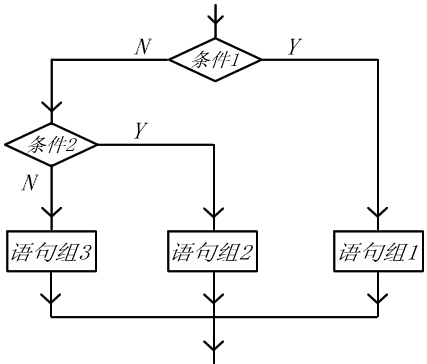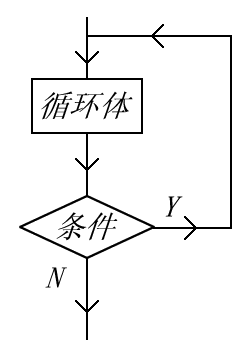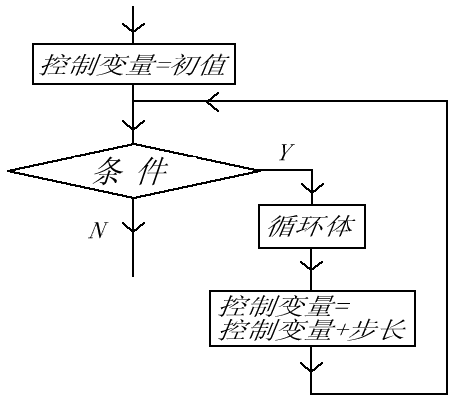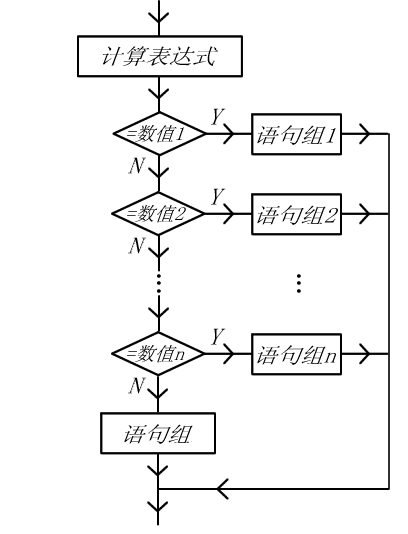Home >Web Front-end >JS Tutorial >JavaScript study notes statements_basic knowledge
JavaScript study notes statements_basic knowledge
- WBOYWBOYWBOYWBOYWBOYWBOYWBOYWBOYWBOYWBOYWBOYWBOYWBOriginal
- 2016-05-16 16:20:141133browse
1. Conditional branch statement : if
Basic format:
if (
}else if (
}else{
}
Execution process:

2. Loop statement
2.1 Pre-test loop statements: The exit condition is evaluated before the code in the loop body is executed.
2.1.1while statement
Basic format:
do {
} while (
Execution process:
 2.1.2 for statement
2.1.2 for statement
Basic format:
for (
}
Execution process:

2.2 Post-test loop statement: The exit condition will be tested after the code in the loop body is executed.
2.2.1, do-while statement
Basic format:
do {
} while (
Execution process:

3. Accurate iteration statement : for-in
Basic format:
for (property in object){
}
Function: Repeatedly execute all properties of the specified object, which can be used to enumerate the properties of the object.
Example:
Click the button below to loop through the properties of the object "person".
<script><br> function myFunction()<br> {<br> var x;<br> var txt="";<br> var person={fname:"Bill",lname:"Gates",age:56}; <br> for (x in person)<br> {<br> txt=txt person[x];<br> }<br> document.getElementById("demo").innerHTML=txt;<br> }<br> </script>
If the object to be represented is null or undefined, the loop body will no longer be executed, or an error will be thrown. Therefore, when executing the for-in loop, you should first check whether the attribute value of the object is null or undefined.
4. Lable statement
Basic syntax:
Label:
For example: begin: for (var i = 0; i < 10 ; i ){
alert(i);
}
Give an example to illustrate the function of label statement:
Not labelable:
var num = 0;
for (var i = 0 ; i < 10 ; i ){
for (var j = 0; j < 10; j ){
If( i == 5 && j == 5 ){
break;
}
num ;
}
}
alert(num);//95
Join lable:
var num = 0;
outPoint:
for (var i = 0 ; i < 10 ; i ){
for (var j = 0; j < 10; j ){
If( i == 5 && j == 5 ){
break outPoint;
}
num ;
}
}
alert(num); //55
It is not difficult to understand that the first example outputs 95, but why the second example outputs 55 is because when the break outpoint is reached, it jumps directly to the putpoint layer and executes the alert statement.
If you change the second example to the following:
var num = 0;
for (var i = 0 ; i < 10 ; i ){
outPoint:
for (var j = 0 ; j < 10 ; j ){
If( i == 5 && j == 5 ){
. } }
};
alert(num);//95
This result is consistent with the result of the first example.
5. break and continue statements
5.1break statement:
break;
}
num ;
};
alert(num);//4
After the break statement is executed, jump to the alert statement
Continue;
}
num ;
};
alert(num);//8
After the continue statement is executed, it jumps to the for() loop and continues to execute the loop until the loop condition is not established.
6. with statement
Basic syntax:
with (object) {Statements
}
Example:
Writing without using with:
var qs = location.search.substring(1);
var hostName = location.hostname;
var url = location.href;
alert(qs);
alert(hostName);
alert(url);
Use the writing method with:
with(location){
var qs = search.substring(1);
var hostName = hostname; var url = href;
}
alert(qs);
alert(hostName);
alert(url);
But the js interpreter needs to check whether the variables in the with block belong to the object contained in with, which will greatly slow down the execution speed of the with statement and make the js statement difficult to optimize.
Therefore, it is not recommended to use the with statement on a large scale.
7. switch statement
Basic syntax:
switch (
case
break;
case
break;
...
default
}

case "hello" " world":
alert("Greeting was found.");
break;
case "goodbye":
alert("Closing was found.");
break;
default:
alert("Unexpected message was found.");
}
var num = 25;
switch (true) {
case num < 0:
alert("Less than 0.");
break;
case num >= 0 && num <= 10:
alert("Between 0 and 10.");
break;
case num > 10 && num <= 20:
alert("Between 10 and 20.");
break;
default:
alert("More than 20.");
}
The switch statement uses the equality operator for comparison, so no type conversion will occur.
Exercise:
for(;;){
alert("2");//How many times is 2 output?
}
The above is the entire content of this article, I hope it can be helpful to my friends.
Related articles
See more- An in-depth analysis of the Bootstrap list group component
- Detailed explanation of JavaScript function currying
- Complete example of JS password generation and strength detection (with demo source code download)
- Angularjs integrates WeChat UI (weui)
- How to quickly switch between Traditional Chinese and Simplified Chinese with JavaScript and the trick for websites to support switching between Simplified and Traditional Chinese_javascript skills

